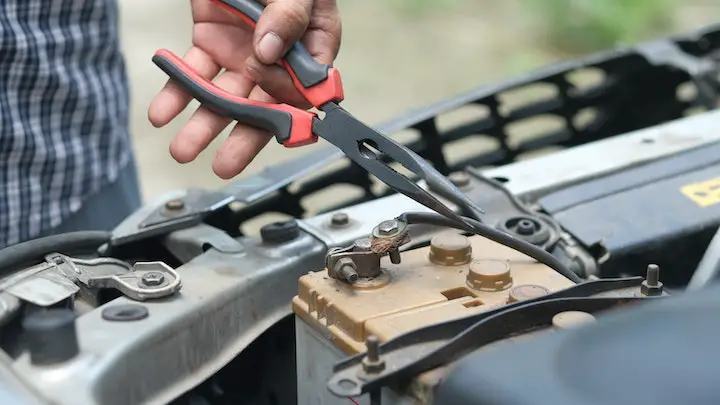To know what the charge of a lithium-ion is to know the number of electrons present in the element. In most cases, a lithium-ion assumes a charge of +1 although it has 3 electrons.
To this effect, lithium readily accommodates abundant ions and significantly improves batteries (Li-ion). These batteries power most electrical or smart devices without significantly impacting weight and the charge on them may vary depending on what stage of charging they are in.
Aside from the ideal +1 charge of lithium-ion, charging operations influence lithium-ion derivatives like phones or car batteries. This operation occurs with a battery management system (BMS), which helps regulate charging and discharging cycles.
In this guide, I will explain why a lithium-ion battery charge is +1 and how charging operations can affect the charge of lithium-ion battery applications. You will also learn about the various charging precautions that can extend Li-ion battery life.
What is the Charge of a Lithium Ion?

Lithium-ion has a +1 charge due to a valence electron in its shell. This outermost electron quickly reacts and packs more ions per electrode area in batteries (which means more power density) without affecting weight.
Lithium-ion batteries can take up varying charges during a charging cycle if there are no chemical or electrical errors. This cycle consists of two major stages:
1. Constant current charge
This is the first stage of charging a Li-ion battery. Here, the charge current is under regulation and usually sits between 0.5 and 1.0 C. Consumer-based lithium-cobalt battery (LCO) cells have a maximum charge rate of 0.8 C.
One thing to also note during constant current charge is that the voltage across the battery increases and the overall charge time can be about 1 hour.
2. Saturation charge
Once the controlled voltage reaches about 4.2 volts, the saturation charge begins. This stage maintains the 4.2 volts for lithium-ion and LCOT batteries.
While doing this, the current will gradually decrease. This charging cycle ends when the current falls to about 10% of the default calibration. Saturation charging usually takes 2 hours, but this can vary depending on the battery type or manufacturer.
Charging Precautions for Lithium Ion Batteries
Considering the amount of energy inside a lithium-ion battery, it is essential to ensure these batteries are properly charged. Below are various factors to watch out for when charging a lithium-ion battery:
1. Charge current
The charge current for lithium-ion batteries should ideally not exceed 0.8C. In cases with lower values, more margins are given for a better lifespan.
While fast chargers are great for lithium-ion batteries, excessive use will impact their lifespan.
2. Charge temperature
The charge on a li-ion battery also depends on temperature. Temperatures below 0°C or above 45°C are not ideal for charging a Li-ion battery.
The ideal temperature for both constant and saturation charges is at room or anything close. Some batteries come with over-temperature protection to ensure no charge on these batteries at extreme temperatures.
3. Discharge current
Every lithium-ion battery has an amount of power or energy stored in it. When this power undergoes too much stress, you risk an explosion due to short circuits.
Most battery applications come with current discharge protection to prevent this. The effectiveness of this protection will depend on the battery’s technology and charge/discharge capability.
When a li-ion battery discharges below 2.3 volts, it is safe to say it is over-discharging. With the help of over-discharge protection, such a battery tends to last longer.
4. Over-voltage
When the voltage across the charge on a lithium-ion battery is too high, damage can ensue. To prevent this, you should only buy li-ion batteries with charge over-voltage protection.
This protection stops the charging process of a lithium-ion battery when the overall voltage is deemed too high.
5. Over-charge
The over-charge protection and over-voltage protection are similar in function. The only difference is that the former measures voltage per cell in a battery instead of overall voltage.
In other words, this protection stops lithium-ion batteries from charging when the voltage per cell rises above 4.30 volts.
6. Reverse polarity
Reverse polarity occurs when lithium-ion batteries charge in the wrong direction. This often results in irreparable damage or explosion if not corrected. Batteries with reverse polarity protection ensure this does not happen.
FAQs
Is Lithium-ion positively charged?
Lithium ions are positively charged. The electrolyte’s positively charged ions move from the anode to the cathode and vice versa via a separator.
What is the biggest disadvantage of a lithium-ion battery?
The biggest downside to lithium-ion batteries is their fragility. They often require a protection circuit for safe operation.
Is there a battery better than lithium-ion?
Magnesium batteries are better than lithium-ion batteries. This is because they release two electrons during discharge, feature higher energy density, and more stability, and are cheaper than lithium-ion batteries.
Conclusion
Lithium is the lightest metal in the periodic table, with a charge of +1 and a great affinity for ionization. Hence, it is easy to understand why it is widely used in battery applications.
While it performs better without affecting battery weight, it must be properly charged to keep it healthy. Failure to properly charge a lithium-ion battery usually results in short circuits, reverse polarity, and explosions.
I hope you found this guide helpful. In cases where your li-ion battery is damaged, you must note these warning signs and not charge such a battery.
Thanks for reading.
